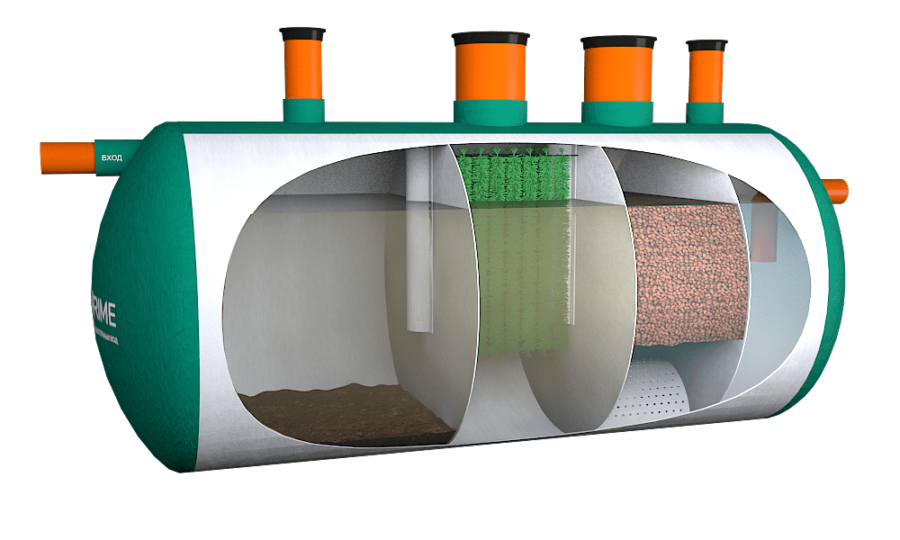Septic tanks play a crucial role in managing wastewater for millions of households around the world. Regular maintenance and pumping of septic tanks are essential to ensure their optimal functioning and prevent costly and unpleasant issues. One common question that arises when it comes to septic tank maintenance is, “How long does it take to pump a septic tank?” In this article, we will delve into this topic and provide you with valuable insights and practical recommendations.
To better understand the time required for septic tank pumping, let’s first grasp the basics of septic systems. A septic tank is an underground chamber that collects and decomposes sewage from residential or commercial properties. Over time, solid waste accumulates in the tank, necessitating periodic pumping to remove the sludge and prevent blockages or overflows.
The duration of septic tank pumping can vary depending on several factors, including the tank’s size, the level of sludge buildup, and the efficiency of the pumping equipment. To give you a clearer picture, let’s take a look at the following summary table:
| Septic Tank Size | Approximate Pumping Time |
|---|---|
| Small (up to 1,000 gallons) | 1-2 hours |
| Medium (1,000-2,000 gallons) | 2-3 hours |
| Large (over 2,000 gallons) | 3-4 hours |
Please note that these time estimates are approximate and can vary based on individual circumstances. Factors such as the accessibility of the tank, the presence of any obstructions, and the expertise of the pumping professionals can also influence the overall duration.
Now that we have a general understanding of septic tank pumping timeframes, let’s explore the main aspects related to this process, including the importance of regular pumping, signs that indicate the need for pumping, and practical recommendations to ensure a smooth and efficient septic system operation.
But before we dive into the details, it’s crucial to emphasize the significance of safety during septic tank maintenance. Handling septic systems involves potential health hazards, so it’s essential to follow proper safety protocols and, if necessary, seek professional assistance. Now, let’s proceed to the main text and conclusion to explore these aspects further.
The Process of Pumping a Septic Tank: Factors to Consider
Importance of Regular Septic Tank Pumping
Regular septic tank pumping is vital for maintaining a healthy and efficient septic system. Over time, solid waste accumulates in the tank, forming a layer of sludge at the bottom. If left unchecked, this sludge can clog the system, leading to backups, foul odors, and potential damage to the drain field. By scheduling regular pumping, typically every 3-5 years, you can prevent these issues and prolong the lifespan of your septic system.

Signs That Indicate the Need for Pumping
It’s crucial to be aware of the signs that indicate your septic tank requires pumping. Ignoring these signs can result in costly repairs and inconveniences. Here are some common indicators that it’s time to pump your septic tank:
- Frequent backups or slow drains: If you notice that your sinks, toilets, or drains are frequently backing up or draining slowly, it could be a sign of excessive sludge buildup.
- Unpleasant odors: Foul odors emanating from your drains, yard, or septic tank area may indicate that the tank is full and needs pumping.
- Pooling water or lush vegetation: If you notice standing water or unusually lush vegetation around the drain field, it could be a sign of a saturated septic system, indicating the need for pumping.
- Gurgling sounds: If you hear gurgling sounds coming from your drains or toilets, it could be a sign of a full septic tank that needs attention.
Factors Affecting Pumping Time
The time required to pump a septic tank can vary depending on several factors:
- Tank Size: The size of your septic tank plays a significant role in determining the pumping time. Smaller tanks, typically up to 1,000 gallons, may take around 1-2 hours to pump, while larger tanks over 2,000 gallons can take 3-4 hours.
- Sludge Buildup: The level of sludge accumulation in the tank affects the pumping time. If the tank hasn’t been pumped for an extended period, it may take longer to remove the accumulated sludge.
- Pumping Equipment: The efficiency and power of the pumping equipment used can impact the overall duration. High-quality equipment can expedite the process, reducing the pumping time.
- Accessibility: The accessibility of the septic tank also plays a role. If the tank is easily accessible, the pumping process can be more efficient. However, if the tank is buried deep or obstructed, it may require additional time and effort.
- Professional Expertise: The expertise of the pumping professionals can influence the duration. Experienced technicians who are familiar with the process can complete the pumping more efficiently.
Conclusions
Regular septic tank pumping is essential for maintaining a functional and trouble-free septic system. The time required to pump a septic tank can vary depending on factors such as tank size, sludge buildup, pumping equipment, accessibility, and professional expertise. By staying vigilant and addressing signs of a full tank promptly, you can avoid costly repairs and ensure the longevity of your septic system. Remember to schedule regular pumping every 3-5 years to keep your septic system in optimal condition.
0 Comments